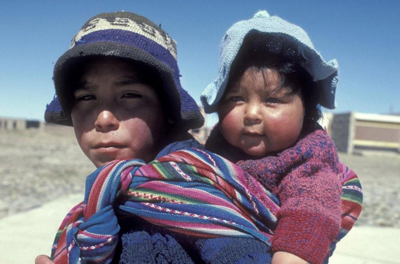Improving Programs to Tackle Extreme Poverty in Bolivia

Summary
Poverty and inequality are harsh realities in Bolivia. In spite of targeted social programs, 59 percent of the indigenous and 62 percent of rural populations still live in extreme poverty.1 Looking to improve social programming for these groups, a special unit in Bolivia’s Ministry of Planning—Unidad de Análisis de Políticas Sociales y Económicas (UDAPE)—approached the World Bank for a knowledge exchange. In response, the World Bank identified three countries—Brazil, Indonesia, and Mexico—that are trying to meet the needs of their poorest populations through innovative Conditional Cash Transfer (CCT) and Community-Driven Development (CDD) programs. With funding from the South-South Experience Exchange, Bolivian development planners met with their peers from these countries to trade perspectives on poverty alleviation programs targeting indigenous and rural populations.
The knowledge and skills Bolivian planners gained from the exchange saved a great deal of trial and error in how to better design and implement social programs for Bolivia’s neediest people. “We have learned very quickly what carrying out such programs involves,” said Viviana Caro Hinojosa, Minister of Development Planning in Bolivia.
Bolivian planners became especially aware of how social programs could be improved through smart monitoring and evaluation (M&E) systems. For instance, discussions with Mexican M&E experts and a review of current Bolivian social programs, persuaded the Bolivian Ministry of Planning to introduce similar techniques into an ongoing conditional cash transfer program for maternal and infant healthcare. “The Bolivians were able to understand that conditional cash transfers are not very effective without ensuring that ‘conditions’ for receiving funds are being met.” said Samuel Freije-Rodriguez, a Senior Economist in the World Bank’s Latin American region.
Reflecting on this experience, Ms. Hinojosa remarked, “We have seen that we can learn very much from processes that have taken up to a decade in other countries.”
Beneficiaries / Participants
Poverty and inequality remain pervasive in Bolivia, where the rate of extreme poverty in 2006 reached 59 percent among indigenous peoples and 62 percent of people living in rural areas.2 The Bolivian Government’s 2008 National Development Plan (NDP) emphasized the need to develop, improve, and expand social programs for these groups.
In turn, Bolivia’s Ministry of Development Planning approached the World Bank to help identify countries that have successful poverty reduction programs for indigenous and rural populations. The World Bank identified three countries that had strong Conditional Cash Transfer (CCT) and Community-Driven Development (CDD) programs—Brazil, Mexico, and Indonesia. A Bank team then helped arrange a knowledge exchange among social program officials, planners, and experts from these countries to discuss program design and implementation and help improve the operational effectiveness of Bolivia’s social programs.

 China
China Colombia
Colombia Denmark
Denmark India
India Indonesia
Indonesia Mexico
Mexico Russian Federation
Russian Federation Spain
Spain United Kingdom
United Kingdom